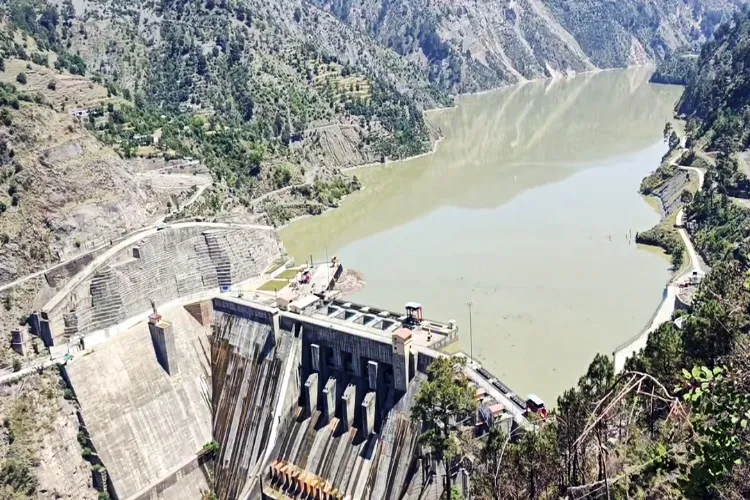
New Delhi
In the wake of the deadly Pahalgam attack, India has suspended its adherence to the 1960 Indus Waters Treaty — a move seen as a firm response to escalating cross-border terrorism. The decision has ignited a storm on social media, with many predicting a looming water crisis for Pakistan. Sensational headlines warn that “Pakistan will die of thirst”, while others claim the country will be “left high and dry” this summer. Though the long-term consequences for Pakistan could indeed be serious, for now, the impact appears to be more psychological than immediate.
Signed in September 1960 after years of negotiations, the Indus Waters Treaty was designed to manage the flow of water from the Indus River system, which is shared by both India and Pakistan. This agreement was forged in the wake of the Partition of British India, a period marked by immense political and economic upheaval. For both countries, rivers are of vital importance, as they provide a crucial source of water for irrigation and agriculture — sectors on which both economies heavily depend.
Under the terms of the treaty, India was granted unrestricted use of the waters from the “eastern rivers” of the Indus system — Sutlej, Beas and Ravi. Pakistan, on the other hand, was allocated the waters of the “western rivers” — Indus, Jhelum and Chenab. Given the geographical realities of the region, Pakistan, as the lower riparian state, is dependent on the water flowing downstream from India. This gives India a degree of control over Pakistan’s water supply, placing the latter in a vulnerable position.
The consequences of this reliance are profound for Pakistan. The country receives about 80% of its total water supply from the Indus, Jhelum and Chenab rivers, and the majority of this flow comes from India. Punjab and Sindh provinces, which produce the bulk of the nation’s food supply, are particularly dependent on this water for irrigation. In fact, Punjab province alone accounts for 85% of Pakistan’s total food production. The agricultural sector contributes around 25% of Pakistan’s GDP and provides the primary livelihood for 70% of the rural population.
An Immediate Threat? Not Yet
The immediate fallout of India’s decision to suspend the treaty, however, may not be as catastrophic as some fear. The infrastructure required to halt or significantly reduce the flow of water from the Indus system to Pakistan does not currently exist. India is not yet in a position to fully turn off the tap. The treaty restricts India from building large reservoirs or dams on the Indus, Jhelum and Chenab rivers, though it does allow for "run-of-the-river" hydroelectric projects — those that do not alter the flow of the water.
As it stands, India’s ability to withhold water from Pakistan is limited. Experts suggest that India could reduce water flow by 5-10%, which, while potentially problematic in the long run, is unlikely to cause an immediate collapse of Pakistan’s agricultural system. For the time being, the flow of water from the Indus rivers remains largely unchanged.
However, the potential for future disruption looms large. If India continues to press the issue, the treaty’s suspension could pave the way for India to begin constructing large reservoir dams on the “western rivers”, something that would require years of planning and construction. This could significantly alter the flow of water into Pakistan and create a long-term water shortage, with disastrous consequences for the country’s agriculture and economy.
A pressure tactic?
While the immediate impact on Pakistan may not be as severe as some have suggested, the psychological ramifications of India’s decision could be far-reaching. The suspension of the treaty represents a direct challenge to Pakistan’s dependence on its water supply and raises serious concerns about the country’s future water security. The move is widely seen as a psychological pressure tactic, aimed at forcing Pakistan to curb cross-border terrorism and cease support for terrorist groups operating in Kashmir.
This tactic has already generated a great deal of anxiety among Pakistan’s political and military leadership, with some analysts suggesting that the threat of water scarcity could lead to economic instability and food shortages.
The long-term implications for the region are unclear. If India proceeds with its plans to build large reservoirs on the western rivers, the consequences for Pakistan could be devastating. For now, though, it remains to be seen whether this latest escalation will lead to a larger confrontation or if diplomacy will once again step in to resolve the crisis.
Already facing a growing crisis of groundwater depletion, Pakistan is acutely aware of how vulnerable its water supply is. Cities like Karachi, once dependent on groundwater, now rely on private water tankers to meet basic needs. In rural areas, where irrigation systems are aging and water tables are dropping, farmers are struggling to maintain crop yields.
ALSO READ: Killing one human is as if killing humanity: Shahi Imam condemns Pahalgam attack
Any significant interruption to the flow of water from the Indus could trigger widespread food shortages, exacerbate economic instability, and increase the risk of social unrest.
As one user on social media aptly summed up the situation: "This is not about turning off the water tomorrow... The tap is still open. But the restraint behind it has been lifted." The waters may still flow, but the political dam holding them back could be on the verge of rupture, with far-reaching consequences for the future of both countries.
